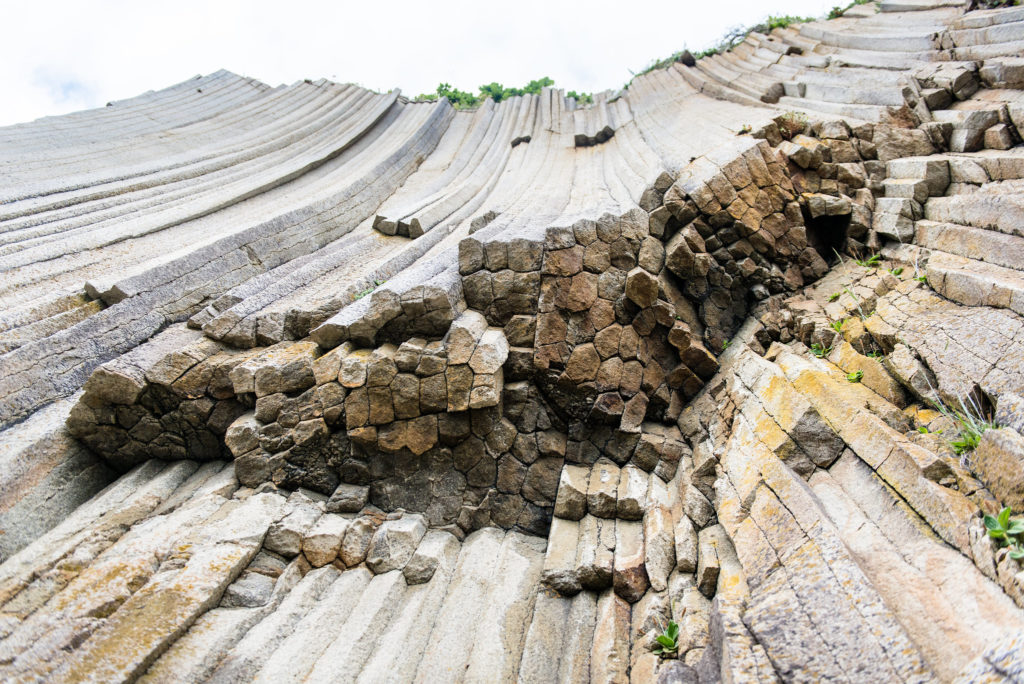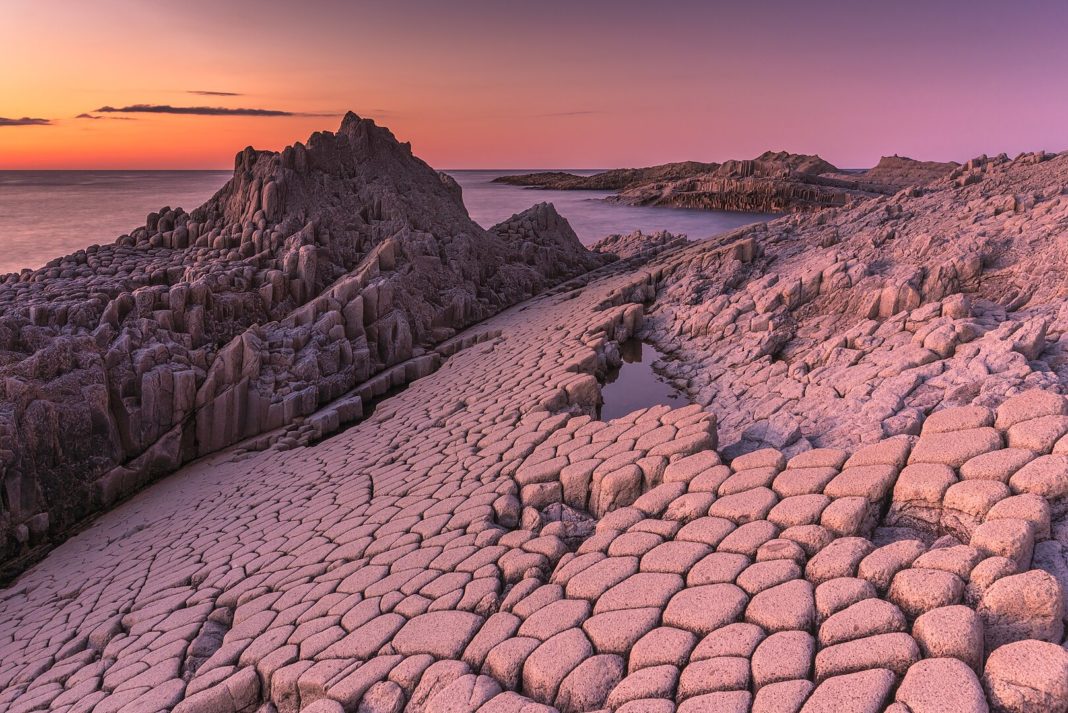Cape Stolbchaty is a geographic cape on the west shore of Kunashir Island, the southernmost of the Kuril Islands, in Sakhalin Oblast, Russia. It is famous for its columnar basalt formations, which are strikingly similar to the Giant’s Causeway in County Antrim in Northern Ireland.
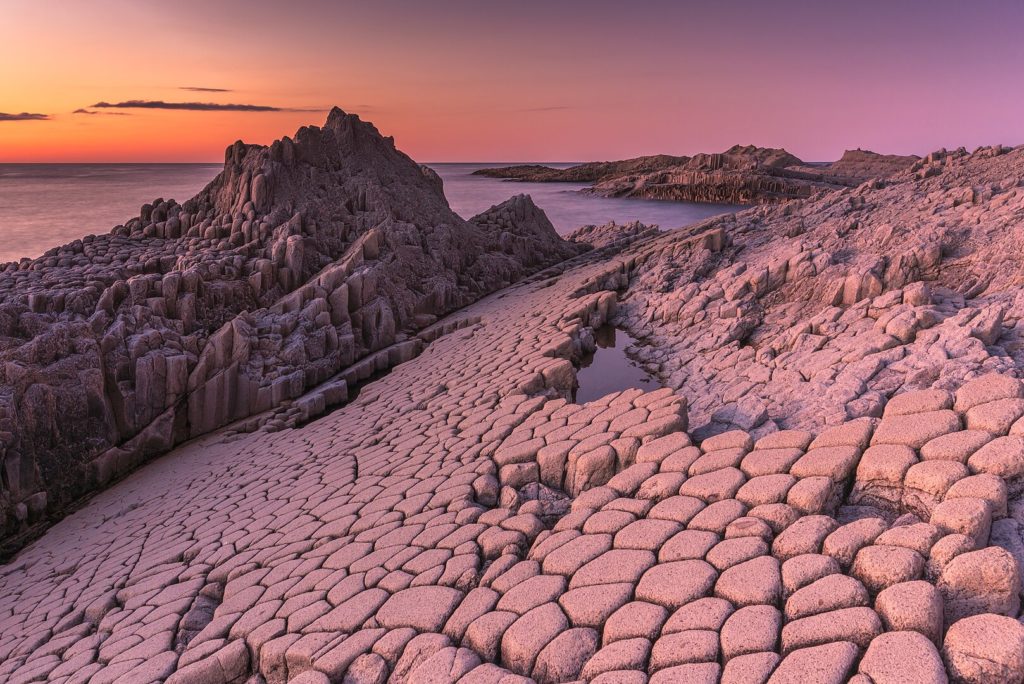
Created by the result of the eruption of the Tyatya volcano millions of years ago, Stolbchaty Cape still retains its pristine features with beautiful disc reefs. The unique feature of Stolbchaty is the inclined rapids structure, with an impressive stretch of disc rocks.
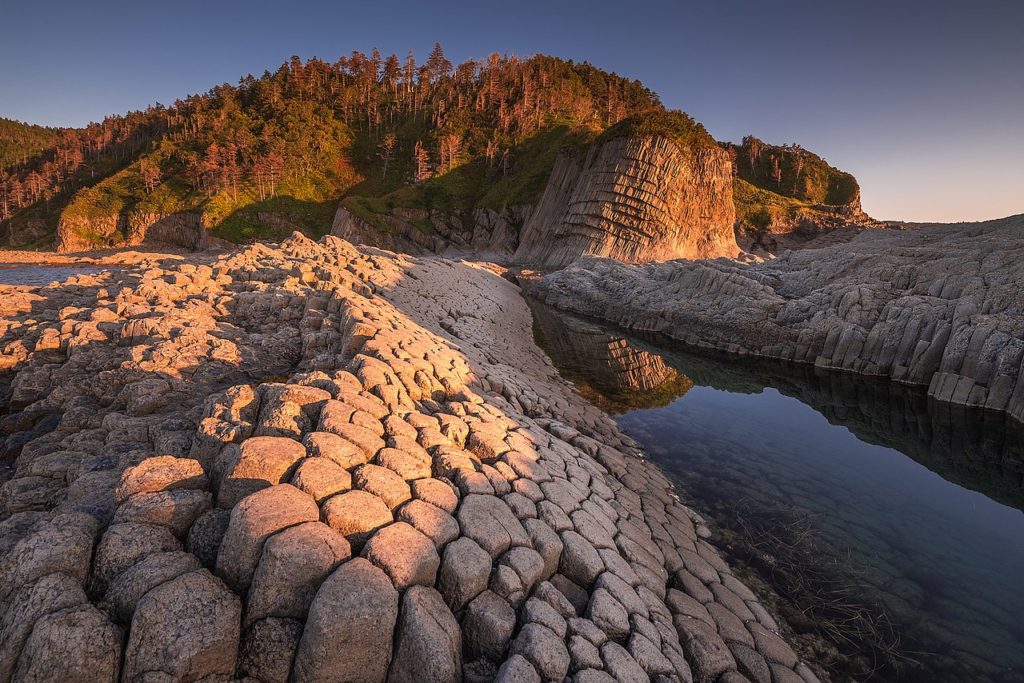
Cape Stolbchaty consists of volcanic basalt layers with pronounced columnar separation in the form of pentagonal and hexagonal columns. Due to wave erosion, the volcanic rock mass is gradually destroyed, resulting in a beautiful picturesque cliff up to 40–50 meters high, jutting out into the Kunashir Strait with several ledges. Gradually, the rocks were destroyed, forming basalt “pillars”.
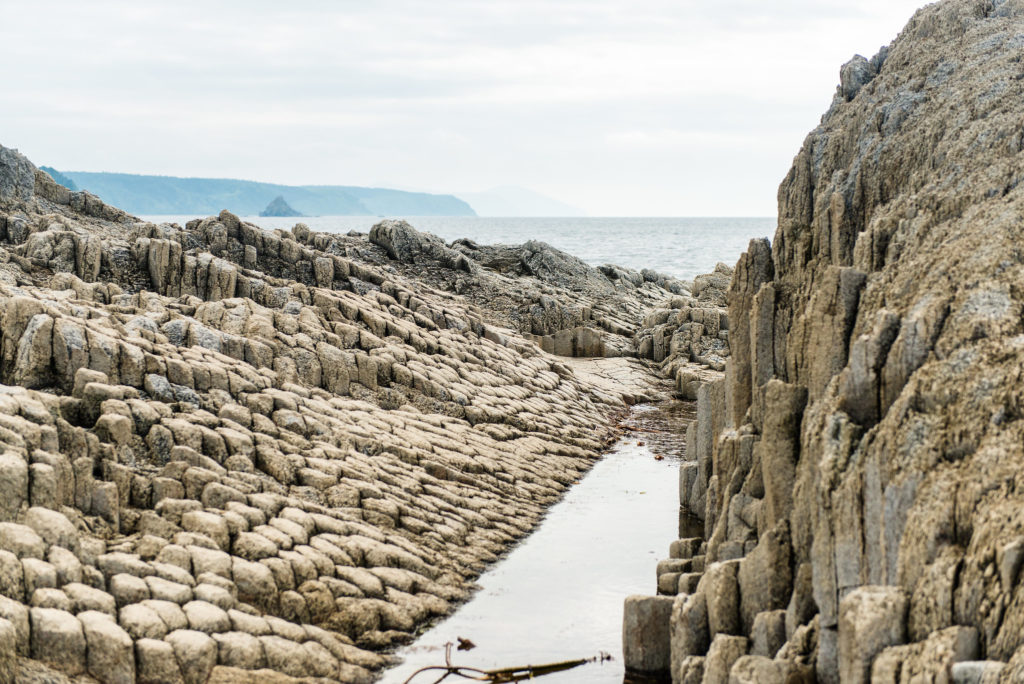
The 50-million-year-old basalt columns at Cape Stolbchaty have been designated a UNESCO World Heritage Site. Interestingly, at the top of the stone pillars, visitors can admire the small pentagons inside the larger pentagons, like a wonderful geometric arrangement of nature.
